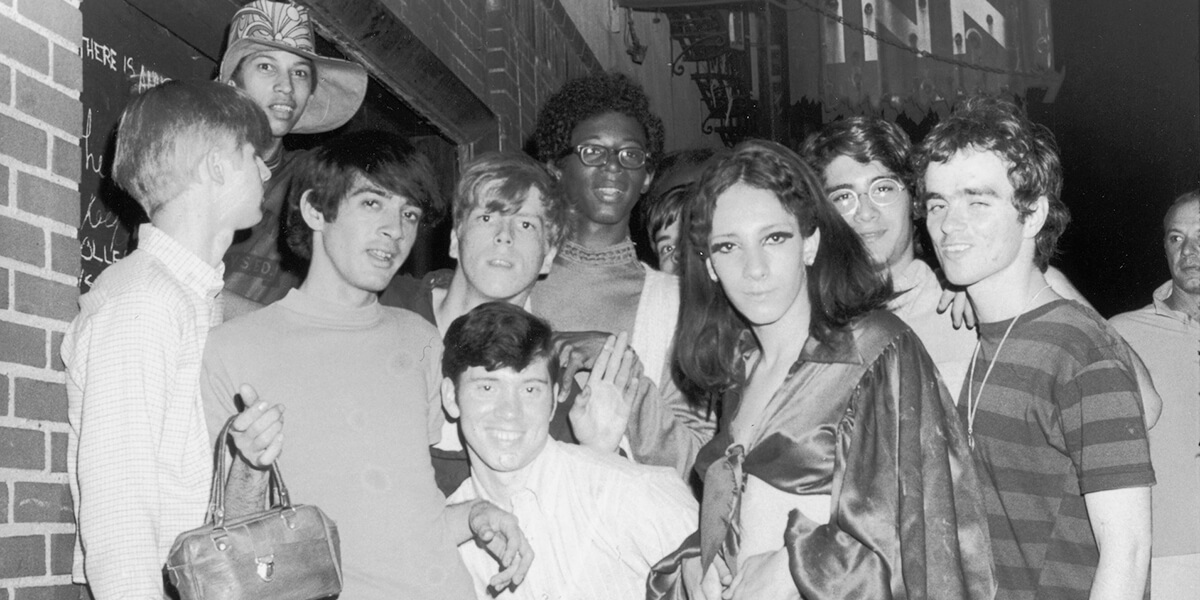
On the morning of June 28, 1969, New York City police raided the Stonewall Inn, a gay bar in Greenwich Village. What followed was a week-long series of demonstrations by the local LGBTQ community protesting heavy-handed and oppressive police practices. The riots have since become an iconic moment in LGBTQ history, inspiring pride parades around the country and the world.
Marc Stein, the Jamie and Phyllis Pasker Professor of History at San Francisco State University, has written a new book marking the 50th anniversary of the protests, The Stonewall Riots: A Documentary History (NYU Press). He sat down recently to talk about his research and what he believes we can learn from looking back.
What sparked your interest in the Stonewall riots?
I came out as gay in the 1980s, and from my first year of college, when I learned a little bit about the history of LGBTQ movements, I was inspired by the courage of those activists. As I got older and more politically engaged, I continued to be fascinated by their motivations and interested in the ways in which their efforts led to transformative social change. The historian in me wants to look at the deeper roots of today’s world, and for me that’s always meant looking at the decades immediately preceding my own coming of age, when the LGBTQ movement began in the 1950s, exploded in the 1960s with Stonewall, and then became a powerful social force in the 1970s.
The Stonewall riots inspired pride parades that still exist today. Through the years, it seems these celebrations have become more commercialized, with corporations getting involved. What do you think about this shift?
The earliest prides I went to were in the second half of the 1980s, when radical AIDS activism emerged on the scene. Just a few years later, the presence of corporate America and police recruiting at pride parades became much more significant. To some extent there’s great irony in seeing the military and the police recruiting at events that commemorate resistance to state authority. On the one hand, many people would say that this is cause for celebration, because it does represent a major shift in orientation on the part of the police and the military. On the other hand, if this is done without any knowledge or reconciliation of the sad and tragic history of law enforcement and the policing of gender and sexuality, then it’s cause for major concern.
Do you see parallels between the Stonewall riots and modern concerns around law enforcement practices?
One of the things that I discovered in doing the background research for the book is that in the months leading up to the Stonewall rebellion there was a series of police killings of LGBTQ people in Los Angeles, Berkeley, Oakland and New York. There was also an anonymous body found near the docks by the Stonewall Inn several weeks before the riots. So I think there was a sense in the community that police violence was a serious threat. That anger and frustration with police practices was evident and at times created coalitions between people of color and gay people. And it continues to be the possible basis of coalitions in the present, given the great outrage that has exploded about current police practices.
So do you think we’re just repeating history here?
There’s the cyclical theory of history that we keep repeating ourselves. But I would say instead that each generation has its own struggles. Power adjusts, and that leads to the need for new forms of resistance. Something that I enjoyed in my research was finding out about various demonstrations from 1969 to 1973 after Stonewall. There are several documents reprinted in my book that capture the humor, campiness and creativity of those demonstrations. I really feel like that’s a lesson that we can use today because I’ve seen a lot of very serious demonstrations. I think we could be a whole lot more creative and original in the way protests are organized today. So if the book can offer some inspiration for that, by looking at what the rioters at Stonewall did 50 years ago, that would be great.
— Ivan Natividad